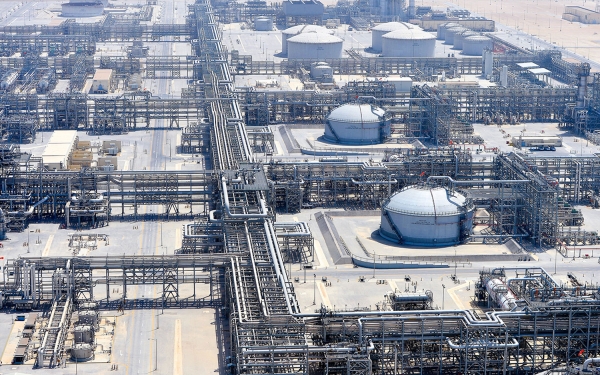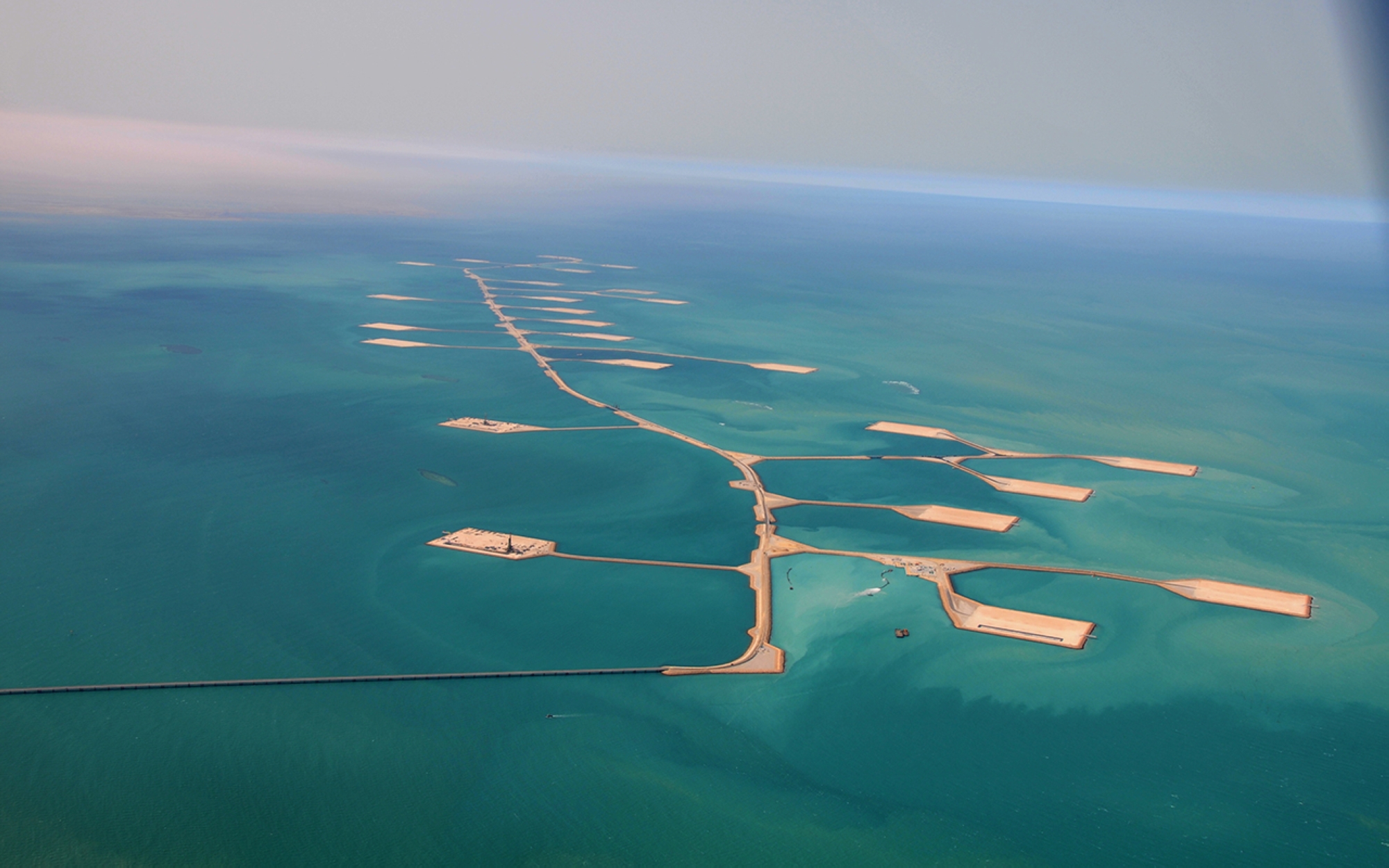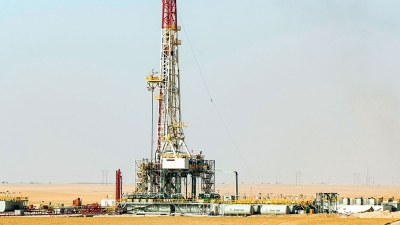

Manifa Oil Field is an offshore field located in the waters of the Kingdom of Saudi Arabia, specifically north of al-Jubayl City, Eastern Province in the Arabian Gulf. It is the fifth-largest oil field in the world and one of the oldest in the Kingdom. It was discovered in 1957, and its area, which consists of six reservoirs, is about forty-five km long and eighteen km wide. Moreover, the field is situated under shallow waters with a depth range between one and fifteen m.
Operations of the Manifa field project
Drilling activities in the project began with Manifa experimental well number 'one', which became the discovery well for the field. Production began in 1964, with facilities capable of producing 125,000 barrels of oil daily. Due to the decline in demand for crude oil, production from the Manifa field was halted in 1984. By 2005, the global market witnessed a rise in demand for oil, especially Arabian heavy crude oil, which led to the redevelopment of this field.
Oil production in the Manifa field project provides the energy equivalent to meeting the needs of one hundred million people around the world.
Development of the Manifa field project
To develop the field, Saudi Aramco took a decision in 2006 to increase its oil production capacity, with an initial investment of USD10 billion. Subsequently, the journey began to search for the best ways to produce oil from the ecosystem-sensitive offshore shallow waters oil field.
In 2007, the company conducted a detailed assessment of the sensitive ecosystem. Its findings fueled the idea of developing twenty-seven artificial islands linked by a causeway to avoid harming the marine environment and maintain a harmonious relationship between nature and technology.
In 2008, the first pillar of the project's longest bridges was embedded into the seabed. Temporary facilities were established, starting with the construction of fourteen bridges to avoid disrupting the vital circulation of marine waters in Manifa Bay. Since that time, the Manifa project has evolved from a preliminary design into an engineering miracle in the oil and gas industry. The Manifa project was a remarkable achievement in logistics, planning, and organization that required more than seven years from design to reach the operation stage.
Construction activities continued at an accelerated pace completing the construction of the islands and causeway, then reclaiming more than forty-five million m of sand from the seabed, and the design phase of the Manifa Central Processing Facility in 2009, i.e. only one year after the launch of the project. By 2012, the construction and operation of the water injection facilities was completed and the new technology that the company developed specifically for the Manifa project was ready to be used.
The engineering of the Manifa field project
Manifa field is an environmental engineering achievement in all its aspects. The project's first milestone was achieved by producing five hundred thousand bbl of oil daily by July 2013. In 2016, Saudi Aramco achieved its goal of producing nine hundred thousand bbl of oil daily.
Saudi Aramco adopted an innovative approach to develop the Manifa field, which is located in the shallow waters of the Arabian Gulf. It succeeded in building twenty-seven artificial islands connected by a series of roads. This network of offshore islands has enabled Aramco to use low-cost onshore drilling and production technologies to develop an offshore field. Moreover, the islands have shallow wells, which results in a 27 percent reduction in capital expenditure, compared to standard offshore development projects.
The design of the artificial islands in Manifa was unprecedented, as the area of each of them is equivalent to the total area of ten football fields. These islands served as onshore drilling sites above the offshore oil field and were connected by a forty-one km long causeway.
Production of the Manifa field project
Arabian heavy crude oil extracted from the Manifa field meets the raw material requirements of two new refineries in the Kingdom: 'SATORP' and 'YASREF', in addition to expanding production capacity in al-Shaybah. Arabian heavy crude oil is credited with increasing oil production and extracting natural gas liquids to support the petrochemical sector.
The project will also provide feedstock for the Jazan Refinery when it becomes operational, as well as 'Motiva' refinery (Saudi Aramco's 'Motiva Enterprises', a joint refining and marketing project in Houston, Texas, USA, and is owned equally by Saudi Aramco and the American Shell Company). More than nine thousand km of pipes and cables were used above and underwater to supply oil to the company's customers.

Quality in the Manifa field project
The project focused on maintaining Saudi Aramco's commitment to quality. It began production three months ahead of schedule and at costs below the allocated budget. The project consumed more than four million hours of engineering work, a maximum workforce of more than 21,000 workers, and a total of more than four million hours of design work. After its development, the project encompasses artificial islands, thirteen offshore platforms for oil production and water injection, along with the necessary underwater pipelines, electricity and communications cables, in addition to Central Processing Facilities including facilities for separating gas from oil, gas processing facilities, a water injection plant, and cogeneration stations.
The project also involves a water supply network to meet the requirements of water injection from Wasia aquifer with flowing water in Abu Hadriyah, in addition to pipelines to collect crude oil and inject water from offshore platforms, the causeway linking land to the artificial islands, and onshore drilling sites in Manifa and Ras Tanajib. Additionally, it involves networks of water injection pipes and distribution pipelines that transport crude oil to the tank yard in al-Ju'aymah, as well as gas and condensates to al-Khursaniyah Gas Plant for further processing.
Ecosystem protection in the Manifa field project
Besides its huge oil production and modern facilities, the Manifa project is also an environmental miracle. Saudi Aramco has cooperated with King Fahd University of Petroleum and Minerals to protect the highly sensitive ecosystem in Manifa. It was keen to follow strict environmental policies to implement preventive procedures and measures regarding excavation, work, land, and air.
Scientists from King Fahd University closely monitored the delicate ecosystem in Manifa bay, filming the coral reef and taking water samples on a weekly basis to check there was no change in the environment. The monitoring continued well after the project ended.
Far from destroying the fragile ecosystem in Manifa Bay, scientists have proven how the causeway design has not only maintained but even enhanced the natural circulation of tidal waters in and out of Manifa Bay. Increased oxygen actually means a healthier environment for shrimp and fish populations. Seagrass meadows have increased by 70 percent. Coral reefs have grown in size and are spreading onto the rocks of the causeway itself.
The company wanted to make sure the coastal reserve in Manifa was developed in a way that enhances the natural biodiversity of the whole region. To revitalize the mangrove regions along the Arabian Gulf coast, the company planted 250,000 trees in 2013. These trees offer a refuge for migrating birds and a nesting ground for ospreys and flamingos. The company also built three nesting platforms to provide a safe haven for the birds to build their nests. These habitats form the nursing grounds for commercial fish, shrimp, and crabs, as a key pillar of the fishing industry in the Kingdom.
Economic impact of the Manifa field project
The Manifa field project had a significant impact on the Saudi economy. In fact, 37 percent of all the items bought for the project were manufactured in the Kingdom. Local infrastructure and services have also improved for residents in these areas.
The design phase was not only limited to employing Saudi experts, but also included experts from Italy, Spain, the United Kingdom, Japan, and the United Arab Emirates. The company has awarded thirty prime contracts to national and international construction companies in several locations across the globe, fuelling more of the world’s economy on a broader scale.
Achievements of the Manifa field project
As a result of the project's magnitude and the adoption of the best possible engineering, manufacturing, production, and environmental designs, the project won a number of awards. It received the 'Innovative Oil Project of the Year' award for using modern technologies in infrastructure, drilling, and production activities, and because it involved more than eighty million hours of work without a lost-time injury, which is one of the best safety records in the industry.
The Manifa Bay project has had such success that Arabian Seas awarded the company first prize for technical excellence in environmental technology. Moreover, the project was nominated for the UNESCO environmental responsibility award.
Related quizzes

